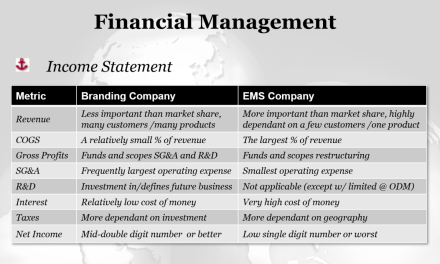Why Visibility in the Electronics Supply Chain is More Important Than Ever
By Misha Govshteyn, CEO, MacroFab

Misha Govshteyn, CEO, MacroFab
The electronics supply chain experiences turbulence for a myriad of reasons; natural disasters, geopolitical tensions, and marketplace volatility included. Since these issues are beyond the control of supply chain leaders, it is crucial that decision-makers have a deep understanding of the entire supply chain-from raw material extraction to delivery. It is impossible to identify the risks threatening one’s business without this insight.
In order to implement specific strategies to improve supply chain visibility, it is imperative to first understand the factors that contribute to risk blindness. Then, solutions can be built to provide long-term efficiencies, lower risk, and provide better outcomes.
Mitigating Risk Blindness
There are multiple factors that can contribute to risk blindness. For example, an over-reliance on manual processes and workflows can contribute to limited supply chain visibility. Teams that use email, spreadsheets, and phone calls to share information create delays in today’s fast-moving marketplace. Information quickly becomes outdated and therefore worthless by the time it arrives at its destination.
Supply chains today require cooperation with external partners. But outsourcing responsibilities can create dependencies requiring management and collaboration. The correct partnership can improve outcomes, whereas the wrong one can impede them and create blind spots.
Moreover, counterfeiting and wire fraud, prevalent in today’s supply chains, also bring confusion to the global landscape. As many as two of every five name-brand products available online through third-party retailers may be counterfeits. However, increased visibility can help reduce this risk across all dimensions; as the saying goes, “knowledge is power,” which holds true within the supply chain management world.
How to Lower Risk
While the supply chain has a lot of moving parts, increased visibility informs companies of what is occurring across the entire landscape and why; an invaluable insight when seeking to lower risk.
The five different stages that contribute to visibility include:
- Raw material stage: Know what’s available and where to obtain it
- Supplier stage: Know when suppliers populate your Bill of Materials, or if they can’t
- Manufacturing stage: Remain informed on capabilities and available capacity
- Distribution stage: Stay current on shipping time information, inventory levels, and reorder requests
- Customer stage: Keep a constant pulse on customer product trends, demand changes and adjust accordingly
When leaders don’t have insight into every specific area of the supply chain, proactive steps to reinforce production and mitigate downtime can’t be implemented. In addition, they’re more likely to deploy an inefficient, costly and error-prone plan. In fact, companies could lose an average of 45% of annual profit once per decade due to supply chain disruption. The right platforms and up-to-date technology maximize visibility and ensure thoughtful decision-making; a key component of elevating supply chain performance and mitigating costs.
Achieve Better Outcomes By Leveraging Data
Finding short-supply parts or alternatives may be easier with database tools such as Findchips, Octopart, and IHS Markit. These tools provide a multitude of data on specific parts, including availability, lifecycle stage, and specifications.
Organizations can make educated sourcing decisions by accessing information (good and bad) about vendors through ERAI, a global information service organization that monitors, investigates, and reports issues affecting the global electronics supply chain. ERAI members have access to an extensive information database including counterfeit components and high-risk groups. Further, an ERAI certification and memberships within other similar groups can quickly help distinguish reputable suppliers from those with questionable practices.
In utilizing the data available through these tools, supply chain leaders can improve outcomes and step up their performance. In addition, teams can choose high-quality and reliable vendors, work more effectively with suppliers, and alter course when disruption occurs.
Choosing a Strategic Sourcing Partner
Having a comprehensive understanding of what’s happening across your supply chain will allow you to act more quickly and intelligently. Forecasts can be accurately developed, enterprise agility increased, and risk more easily eliminated.
However, doing this siloed can be not just overwhelming, but inefficient. If your organization is seeking to advance internal visibility and organizational transformation, it requires leadership to conduct a full scale override of any 20th-century processes or technology still in place.
If this seems daunting, then you may consider choosing a strategic sourcing partner and letting them do the hard work on your behalf. The provider can serve as an easy-to-use access point to vetted electronics manufacturers and offer strategic sourcing services that deliver the visibility. This sourcing partner will extract the latest market intelligence available and give users access to that vital information in a streamlined format.
A quality strategic sourcing partner will have well-established processes for keeping counterfeit parts out of facilities and accelerating the electronics design process with fast and predictable lead times. A comprehensive breakdown should be available regarding competitive pricing, data to forecast parts availability, with access to real time updates. The right strategic partner can increase supply chain visibility, helping you to identify reliable manufacturers, reduce downtime, and find components faster than your competition – all of which are essential to developing robust and resilient supply chains.
–
Author: Misha Govshteyn is CEO, MacroFab, operator of the largest digital platform for electronics manufacturing from prototype to high-scale production.












